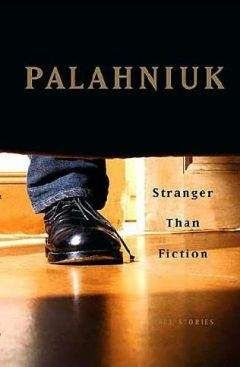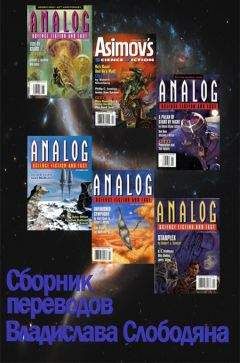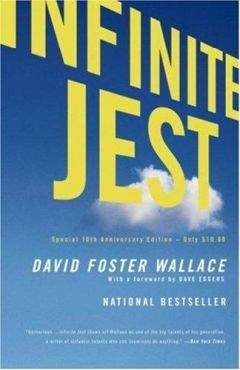Chuck Palahniuk
Stranger Than Fiction (True Stories)
For Mick and Chick and Chimp
Fact and Fiction: An Introduction
If you haven't already noticed, all my books are about a lonely person looking for some way to connect with other people.
In a way, that is the opposite of the American Dream: to get so rich you can rise above the rabble, all those people on the freeway or, worse, the bus. No, the dream is a big house, off alone somewhere. A penthouse, like Howard Hughes. Or a mountaintop castle, like William Randolph Hearst. Some lovely isolated nest where you can invite only the rabble you like. An environment you can control, free from conflict and pain. Where you rule.
Whether it's a ranch in Montana or basement apartment with ten thousand DVDs and high-speed Internet access, it never fails. We get there, and we're alone. And we're lonely.
After we're miserable enough-like the narrator in his Fight Club condo, or the narrator isolated by her own beautiful face in Invisible Monsters-we destroy our lovely nest and force ourselves back into the larger world. In so many ways, that's also how you write a novel. You plan and research. You spend time alone, building this lovely world where you control, control, control everything. You let the telephone ring. The emails pile up. You stay in your story world until you destroy it. Then you come back to be with other people.
If your story world sells well enough, you get to go on book tour. Do interviews. Really be with people. A lot of people. People, until you're sick of people. Until you crave the idea of escaping, getting away to a…
To another lovely story world.
And so it goes. Alone. Together. Alone. Together.
Chances are, if you're reading this, you know this cycle. Reading a book is not a group activity. Not like going to a movie or a concert. This is the lonely end of the spectrum.
Every story in this book is about being with other people. Me being with people. Or people being together.
For the castle builders, it's about flying a stone flag so grand it attracts people with the same dream.
For the combine-demolition folks, it's about finding a way to get together, a social structure with rules and goals and roles for people to fill while they rebuild their community by crashing farm equipment.
For Marilyn Manson, it's about a kid from the Midwest who can't swim, suddenly moved to Florida, where social life is lived in the ocean. Here, that kid is still trying to connect with people.
These are all nonfiction stories and essays I wrote between novels. In my own cycle, it goes: Fact. Fiction. Fact. Fiction.
The one drawback to writing is the being alone. The writing part. The lonely-garret part. In people's imagination, that's the difference between a writer and a journalist. The journalist, the newspaper reporter, is always rushing, hunting, meeting people, digging up facts. Cooking a story. The journalist writes surrounded by people, and always on deadline. Crowded and hurried. Exciting and fun.
The journalist writes to connect you to the larger world. A conduit.
But a writer writer is different. Anybody who writes fiction is-people imagine-alone. Maybe because fiction seems to connect you to only the voice of one other person. Maybe because reading is something we do alone. It's a pastime that seems to split us away from others.
The journalist researches a story. The novelist imagines it.
What's funny is, you'd be amazed at the amount of time a novelist has to spend with people in order to create this single lonely voice. This seemingly isolated world.
It's hard to call any of my novels "fiction."
Most of the reason I write is because once a week it brought me together with other people. This was in a workshop taught by a published writer-Tom Spanbauer-around his kitchen table on Thursday nights. At the time, most of my friendships were based on proximity: neighbors or coworkers. Those people you know only because, well, you're stuck sitting next to them every day.
The funniest person I know, Ina Gebert, calls coworkers your "air family."
The problem with proximity friends is, they move away. They quit or get fired.
It wasn't until a writing workshop that I discovered the idea of friendships based on a shared passion. Writing. Or theater. Or music. Some shared vision. A mutual quest that would keep you together with other people who valued this vague, intangible skill you valued. These are friendships that outlast jobs and evictions. This steady, regular Thursday-night gabfest was the only incentive to keep me writing during the years when writing didn't pay a dime. Tom and Suzy and Monica and Steven and Bill and Cory and Rick. We fought and praised each other. And it was enough.
My pet theory about Fight Club's success is that the story presented a structure for people to be together. People want to see new ways for connecting. Look at books like How to Make an American Quilt and The Divine Secrets of the Ya-Ya Sisterhood and The Joy Luck Club. These are all books that present a structure-making a quilt or playing mah-jongg-that allows people to be together and share their stories. All these books are short stories bound together by a shared activity. Of course, they're all women's stories. We don't see a lot of new models for male social interaction. There's sports. Barn raisings. That's about it.
And now there's fight clubs. For better or worse.
Before I started writing Fight Club, I worked as a volunteer at a charity hospice. My job was to drive people to appointments and support-group meetings. There, they'd sit around with other people in a church basement, comparing symptoms and doing New Age exercises. Those meetings were uncomfortable because no matter how I tried to hide, people always assumed I had the disease they had. There was no discreet way to say I was just observing, a tourist waiting to take my charge back to the hospice. So I started telling myself a story about a guy who haunted terminal illness support groups to feel better about his own pointless life.
In so many ways, these places-support groups, twelve-step recovery groups, demolition derbies-they've come to serve the role that organized religion used to. We used to go to church to reveal the worst aspects of ourselves, our sins. To tell our stories. To be recognized. To be forgiven. And to be redeemed, accepted back into our community. This ritual was our way to stay connected to people, and to resolve our anxiety before it could take us so far from humanity that we would be lost.
In these places I found the truest stories. In support groups. In hospitals. Anywhere people had nothing left to lose, that's where they told the most truth.
While writing Invisible Monsters, I'd call telephone sex numbers and ask people to tell me their dirtiest stories. You can just call and say: "Hey, everybody, I'm looking for hot brother-sister incest stories, let's hear yours!" or "Tell me about your dirtiest, filthiest cross-dressing fantasy!" and you'll be taking notes for hours. Because it's only sound, it's like an obscene radio show. Some people are terrible actors, but some will break your heart.
On one call, a kid talked about being blackmailed into having sex with a policeman who threatened to have his parents charged with abuse and neglect. The policeman gave the kid gonorrhea, and the parents he was trying to save… they threw him out to live on the street. Telling his story, near the end the kid started to cry. If he was lying, it was a magnificent performance. A tiny one-on-one piece of theater. If it was a story, it was still a great story.
So of course I used it in the book.
The world is made of people telling stories. Look at the stock market. Look at fashion. And any long story, any novel, is just a combination of short stories.
While researching my fourth book, Choke, I sat in on sex-addict talk therapy sessions, twice each week for six months. Wednesday and Friday nights.
In so many ways, these rap sessions weren't much different than the Thursday-night writers' workshop I attended. Both groups were just people telling their stories. The sexaholics might've been a little less concerned about "craft," but they still told their stories of anonymous bathroom sex and prostitutes with enough skill to get a good reaction from their audience. Many of these people had talked in meetings for so many years that hearing them, you heard a great soliloquy. A brilliant actor playing him- or herself. A one-person monologue that showed an instinct for slowly revealing key information, creating dramatic tension, setting up payoffs and completely enrolling the listener.
For Choke, I also sat with Alzheimer's patients as a volunteer. My role was just to ask them about the old photographs each patient kept in a box in their closet, to try and spur their memory. It was a job the nursing staff didn't have time to do. And, again, it was about telling stories. One subplot of Choke came together as, day by day, each patient would look at the same photo, but tell a different story about it. One day, the beautiful bare-breasted woman would be their wife. The next day, she was some woman they met in Mexico while serving in the navy. The next day, the woman was an old friend from work. What struck me is… they had to create a story to explain who she was. Even if they'd forgotten, they'd never admit it. A faulty well-told story was always better than admitting they didn't recognize this woman.
Telephone sex lines, illness support groups, twelve-step groups, all these places are schools for learning how to tell a story effectively. Out loud. To people. Not just to look for ideas, but how to perform.
We live our lives according to stories. About being Irish or being black. About working hard or shooting heroin. Being male or female. And we spend our lives looking for evidence-facts and proof-that support our story. As a writer, you just recognize that part of human nature. Each time you create a character, you look at the world as that character, looking for the details that make that reality the one true reality.
Like a lawyer arguing a case in a courtroom, you become an advocate who wants the reader to accept the truth of your character's worldview. You want to give the reader a break from their own life. From their own life story.
This is how I create a character. I tend to give each character an education and a skill set that limits how they see the world. A house cleaner sees the world as an endless series of stains to remove. A fashion model sees the world as a series of rivals for public attention. A failed medical student sees nothing but the moles and twitches that might be the early signs of a terminal illness.
During this same period when I started writing, friends and I started a weekly tradition we called "Game Night." Every Sunday evening we'd meet to play party games, like charades. Some nights we'd never start the game. All we needed was the excuse, and sometimes a structure, to be together. If I was stuck in my writing, looking for a new way to develop a theme, I'd do what I'd later call "crowd seeding." I'd throw out a topic of conversation, maybe tell a quick funny story and prompt people to tell their own versions.
Writing Survivor, I'd bring up the topic of cleaning hints, and people would provide them for hours. For Choke, it was coded security announcements. For Diary, I told stories about what I'd found, or left, sealed inside the walls of houses I'd worked on. Hearing my handful of stories, my friends told theirs. And their guests told their stories. And within one evening, I had enough for a book.
In this way, even the lonely act of writing becomes an excuse to be around people. In turn, the people fuel the storytelling.
Alone. Together. Fact. Fiction. It's a cycle.
Comedy. Tragedy. Light. Dark. They define each other.
It works, but only if you don't get stuck too long in any one place.
A pretty blonde tilts her cowboy hat farther back on her head. This is so she can deep-throat a cowboy without her hat brim hitting him in the gut. This is on a stage, in a crowded bar. Both of them are naked and smeared with chocolate pudding and whipped cream. This they call the "Co-Ed Body Painting Contest." The stage is red carpet. The lights, fluorescent. The crowd chants, "We want head! We want head!"
The cowboy sprays whipped cream in the crack of the blonde's ass and eats it out. The blonde masturbates him with a handful of chocolate pudding. Another couple take the stage and the man licks pudding out of the woman's shaved pussy. A girl with a brown ponytail in a halter top sucks off a kid with an uncut dick.
This is while the crowd sings "You've Lost That Loving Feeling."
As the girl leaves the stage, one of her girlfriends shouts, "You sucked him, you little bitch!"
The crowd is packed in, smoking cigars, drinking Rainier Beer, drinking Schmidt's and Miller, eating deep-fried bull gonads dipped in ranch dressing. You smell sweat, and when somebody farts, the chocolate pudding doesn't look like pudding anymore.
This is the Rock Creek Lodge Testicle Festival just getting started.
This is some fifteen miles south of Missoula, Montana, where this same weekend drag queens from a dozen states meet to crown their Empress. This is why hundreds of Christians have come into town, to sit on street corners in lawn chairs and point at the drag queens strutting in miniskirts, and at the fifteen thousand leather bikers roaring through town on choppers. The Christians point and shout, "Demon! I can see you, demon! You are not hiding!"
For just this one weekend, the first weekend in September, Missoula is the center of the frigging universe.
At the Rock Creek Lodge, people climb the "Stairway to Heaven," the outdoor stage, all weekend to do, well… you name it.
A stone's throw to the east, trucks go by on Interstate 90, blowing their air horns as the girls onstage hook their legs over the railings and pump their shaved pussies in the air. Half a stone's throw to the west, the Burlington Northern freight trains slow to get a better look and blow their sirens.
"I built the stage with thirteen steps," says festival founder Rod Jackson. "It could always be a gallows."
Except that it's painted red, the stage looks like a gallows.
During the women's wet T-shirt contest, the stage surrounded by bikers and college kids and yuppies and truckers, skinny cowboys and rednecks, a blonde in clunky high heels hooks one leg over the stage railing and squats low on her other leg so the crowd can reach up and finger her.
The crowd chants, "Beaver! Beaver! Beaver!"
A blonde with short hair and a ring through her labia grabs the garden hose from the wet T-shirt organizer. She douches with the hose and squats at the edge of the stage, spraying the crowd.
Two brunettes suck each other's wet breasts and French kiss. Another woman leads a German shepherd up on stage. She leans back, pumping her hips as she holds the dog's mouth between her legs.
A couple in buckskin costumes climb the stage and strip. They copulate in a lot of different positions while the crowd chants, "Fuck her! Fuck her! Fuck her!"





